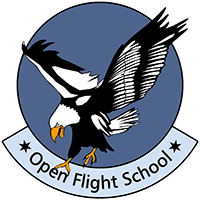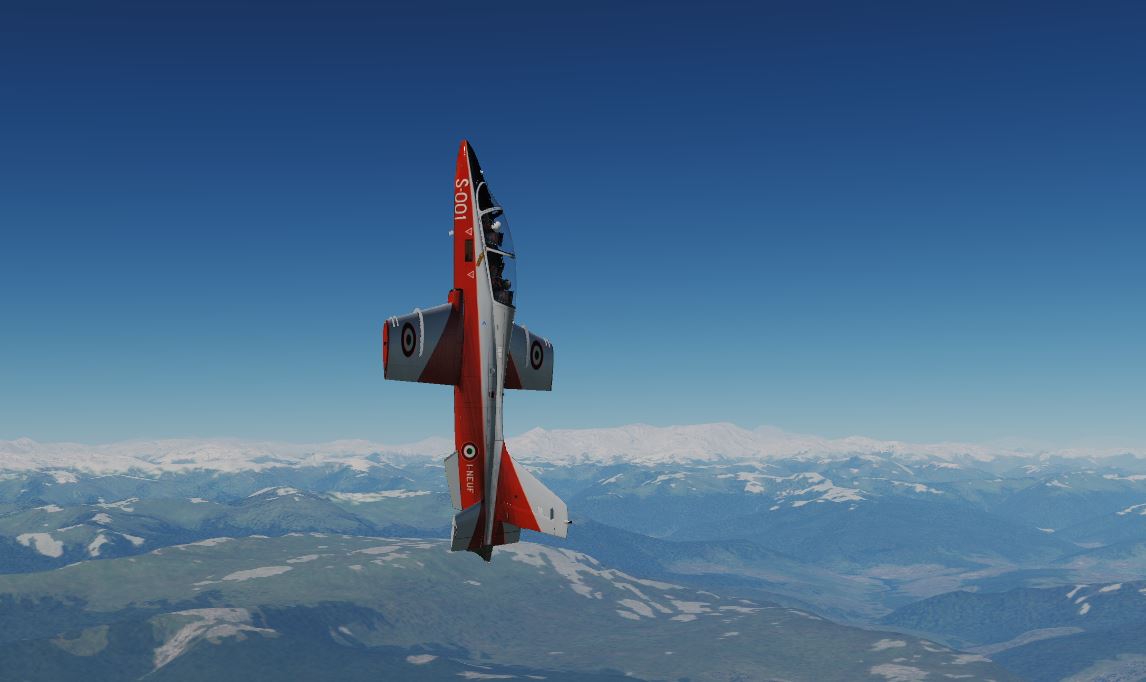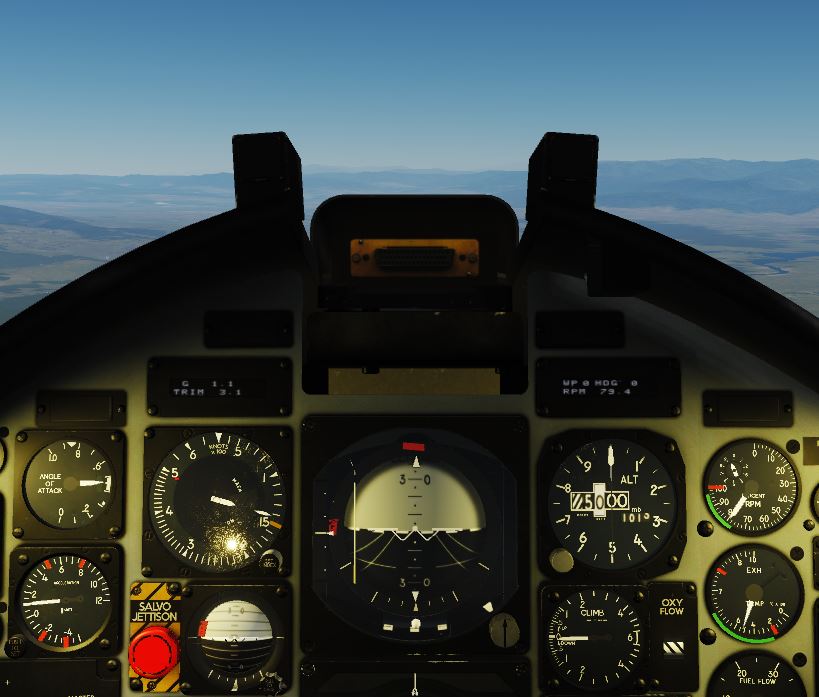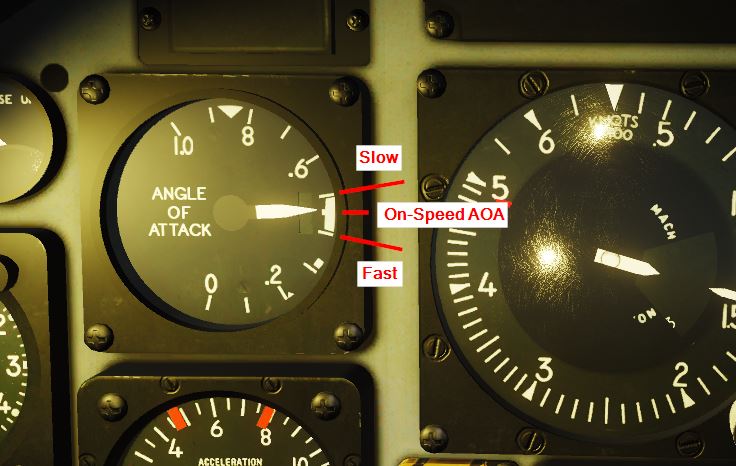Simplified Procedures in Detail
7. Flight Characteristics
We recommend that you first make a few flight with this plane. You should be familiar with the machine and its flight characteristics.
To fly, start mission 03 Start and Free Flight. Start from the runway and climb to 5000 feet
You can try a few things at moderate speed and height. Try each of the following list:
- Climb and dive, fly up and down, sometimes gently, sometimes more aggressively, sometimes at slower speeds and sometimes faster. How does the bird react?
- Fly right and left turns, also at different speeds and roll rates
- Progressively apply up to full rudder
- Combine rudder with aileron (slipping)
- Test the reaction to power changes by advancing and retarding the throttle. How quickly does the engine respond?
- Try to fly as slowly as possible without stalling and losing control. At what speed does the controls become "sloppy"? At what speed does the MB-339 stall? When does the shaking start in the cockpit? A sign that you are about to stall. Try this Clean (Landing Gear Up, Flaps Up) and Dirty (Landing Gear Down, Flaps Down)
All this should be tested to get an initial feel for the plane. If you overdo it, it's worth mentioning that you trigger the ejection seat with Ctrl + E], [Ctrl + E], [Ctrl + E. ; -)
Take the opportunity and tune the joystick axes (curvature) if necessary, to find a good handling with your hardware and this plane.
That is a personal question taste, but also a matter of practice and skill.
Note: Set as much curvature and central deadband as necessary to allow for small, sensitive control inputs, but as little as possible to avoid over-reacting at the end-stroke of the axles.
That is a personal question taste, but also a matter of practice and skill.
Note: Set as much curvature and central deadband as necessary to allow for small, sensitive control inputs, but as little as possible to avoid over-reacting at the end-stroke of the axles.
As a specific preparation for the landing you test the flight characteristics best with partially and fully extended Flaps and Landing Gear Down:
Now fly at a sufficient height of about 5,000 feet or higher, as slow as possible. At what speed can you no longer control the aircraft? So when does the stall occur? The joystick feels doughy and the aircraft responds barely or delayed to your control movements. Remember these speeds, to be prepared for them later. Pitching the nose to the horizon and accelerating, you can usually quickly stop the stall, if you do not and wait too long it may start to spin and then even hit the ground. Therefore, approach this slowly, without unnecessarily “destroying the aircraft and killing yourself.
Also try to maintain altitude and reduce speed with the landing gear and flaps extended. Trim the plane so that you keep the angle of attack indicator as central as possible within the landing AoA marking. Whether the machine is properly trimmed, you will notice, when you let go of the stick. If the aircraft then goes into a climb or descent, you had not correctly "trimmed off" all control pressure.
Success in this exercise means you can already apply the required angle of attack for the landing.
Get used to slow flying. That will make the landing much easier.
The practice mission pack includes the practice of landing and flying. This is the quickest way to test flight behaviour repeatedly or to land directly.
If you feel ready to land, move on to the next section.
Up Next
Approach and Normal Landing.



